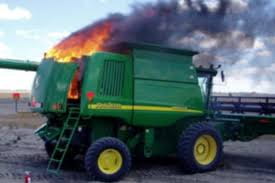Source: Knox County Health Department
What is coronavirus disease 2019 (COVID-19)?
COVID-19, or coronavirus disease 2019, is an upper respiratory tract disease caused by one of the seven coronaviruses known to infect humans. It was first identified in humans in Wuhan, Hubei Province, China, in December 2019. The virus that causes COVID-19 is called SARS-CoV-2.
 Who is at risk?
Who is at risk?
The federal Centers for Disease Control and Prevention considers risk to the general public in most communities to be low. People who recently traveled to China, South Korea, Japan, Iran, or Italy, and people who care for patients with COVID-19 are at higher risk. As of March 16, 2020, there are 50 confirmed cases of COVID-19 diagnosed in Ohio. No confirmed cases in Knox County.
What are the symptoms?
Symptoms, which generally appear two to 14 days after exposure, include fever, cough, and difficulty breathing. Most people who become sick do not require hospitalization, but older adults, people with chronic health conditions, and people with compromised immune systems are more likely to require more advanced care.
How does it spread?
Coronaviruses are generally thought to be spread most often by respiratory droplets. The virus that causes coronavirus disease 2019 is spreading from person-to-person and someone who is actively sick with the disease can spread the illness to others. That is why CDC recommends that these patients be isolated either in the hospital or at home until they are better and no longer pose a risk of infecting others.
How can I prevent it?
Currently, there are no vaccines available to prevent COVID-19 infection. The Centers for Disease Control and Prevention(CDC) recommends typical infectious disease precautions, just as those used to prevent cold or flu:
- Wash your hands often with soap and water for at least 20 seconds. Use an alcohol-based hand sanitizer if soap and water are not available.
- Avoid touching your mouth, nose, or eyes.
- Cover coughs/sneezes with your arm or a tissue.
- Avoid exposure to others who are sick.
- Stay home you are ill (except to visit a health care professional) and avoid close contact with others.
- Get adequate sleep and eat well-balanced meals to ensure a healthy immune system.
Also, clean high-touch areas – counters, tables, doorknobs, light switches, bathroom fixtures, toilets, phones, keyboards, tablets, nightstands – every day using household cleaning spray or wipes according to label directions.
Where is it spreading?
While the COVID-19 outbreak began in China, it is now spreading worldwide, threatening to cause a pandemic. Sustained, ongoing person-to-person spread in the community is occurring in some international locations. In the U.S., several instances of infection with the virus that causes COVID-19 have occurred in people with no travel history and no known source of exposure in several states. This has raised the level of concern about the immediate threat of COVID-19 for certain communities.
Should I wear a face mask?
The use of face masks by people who are not sick is not recommended to protect against respiratory diseases. Face masks should be used by people who show symptoms of COVID-19 to help prevent spread of the disease and by healthcare workers and others taking care of someone in a close setting.
Where have there been confirmed cases of COVID-19 in the Unites States and globally?
For an updated list of countries reporting confirmed COVID-19 cases, please visit the CDC website here.
Will warm weather stop the outbreak of COVID-19?
It is not yet known whether weather and temperature impact the spread of COVID-19. Some other viruses, like the common cold and flu, spread more during cold weather months, but that does not mean it is impossible to become sick with these viruses during other months. At this time, it is not known whether the spread of COVID-19 will decrease when weather becomes warmer.
How is COVID-19 treated?
There are no medications specifically approved for COVID-19. Most people with mild coronavirus illnesses will recover on their own and may not require hospitalization. However, some people develop pneumonia and require increased medical care or hospitalization.



